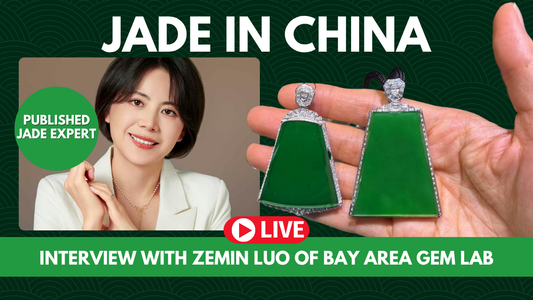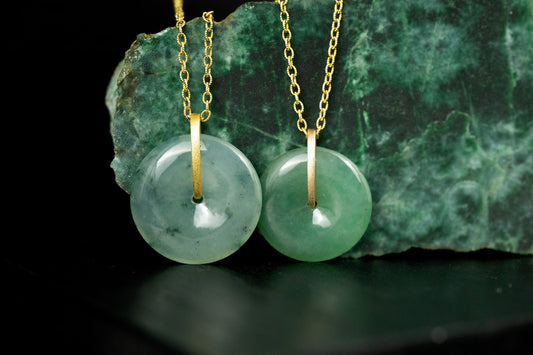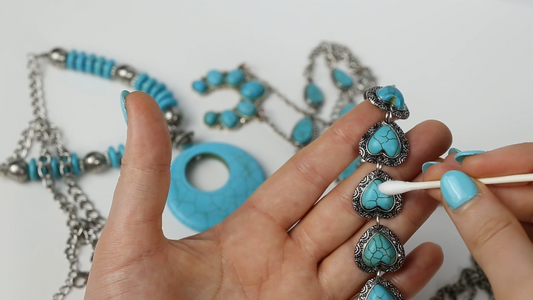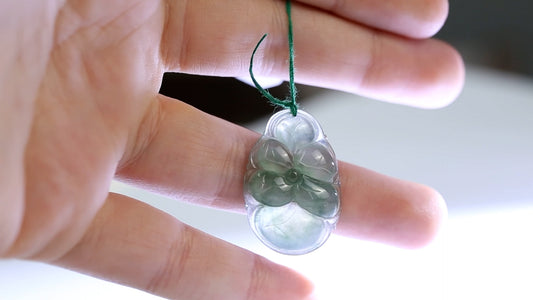Thousands of miles apart, ancient Chinese and Mesoamerican peoples shared a deep reverence for jade above all other materials, both believing it to be the key to immortality.
The story of Guatemalan jade goes back 3-4,000 years and begins with the ancient Olmecs, possibly the oldest known major Mesoamerican civilization. The Olmec people had a complex calendar, massive stone sculptures and sacred complexes, and might have even understood the concept of zero in mathematics.
Archaeologists have found evidence of jade usage by the Olmec and Mayan cultures from the Motagua River in now-Guatemala to modern-day Costa Rica from as early as 1500BC. Used for ritualistic masks and carvings, ceremonial weaponry, currency, and more, the allure of jade was strong in Mesoamerican cultures.
So why were the Olmec and Maya people so drawn to jade? While jade is one of the toughest gems in the world, allowing it to be carved into tools and weapons for long-term use, its complex gemology and rarity alone cannot explain their fascination.
It is interesting that the Chinese and Mesoamerican attitudes toward jade were so similar.
Jade had a strong association with royalty in both cultures, which shared similar views on calendars and astronomy, the four cardinal compass points, and it is believed both cultures saw a rabbit on the moon instead of the “man in the moon.” There were many connections between these two completely different peoples, which didn't even know about each other.
Fast forward to the 15th Century when Spanish explorers arrived in the Americas, having never seen jade before. They were offered “quetzal-chalchihuitl” by the native peoples, a gemstone that was already carved and had been in circulation for an unknown amount of time. The Spanish observed that the true source of the jade was a mystery to these people, that even the peoples of Central America themselves did not know where the jade mines were.
Naturally, this mysterious stone made its way to England around 1596 via the explorer Walter Raleigh, who mentioned that the Spanish called it “piedra de ijada,” or “stone of the kidneys,” indicating that it was believed to treat kidney ailments. But the source of the jade was not found, and the jade culture of Mesoamerica was repressed to the point of very little regard for the stone. Eventually, the Central American peoples didn’t even know how significant jade had really been to their culture.
It wasn't until the early 1900s when rumor of an ancient well piqued the interest of Edward H. Thompson. It was said that this ceremonial well in Chichen Itza had been used for ritual sacrifice. Other than humans, of course, what all had the Mayans sacrificed there? What was inside the well?
These questions led to what may be the greatest archaeological find of the Americas, which uncovered a slew of jade statues, cups, bowls, celts, ceremonial weaponry, and more. This sparked an archaeological interest in the history of jade in the Americas. But even into the ‘50s, the source of pre-Columbian jades was still unknown. Multiple scientists embarked on this treasure hunt with little success until Jay and Mary Lou Ridinger.
Jay Ridinger and Mary Lou (at the time, Johnson) fell in love while prospecting for jade. They found jade in Guatemala and created the first major jade business in the country, where they would mine, carve, and sell Guatemalan jade.
They got married and created an incredible and far-reaching legacy that is beautifully told in the book: Stone of Kings - In Search of the Lost Jade of the Maya.
--
Translucent blue jade still wouldn’t be discovered in Guatemala until the turn of the century, and lilac jade and galactic jade were also discovered some time after the stone was initially found there. And today, Guatemala has a sense of pride in this historically significant and beautiful stone that they offer the world.





